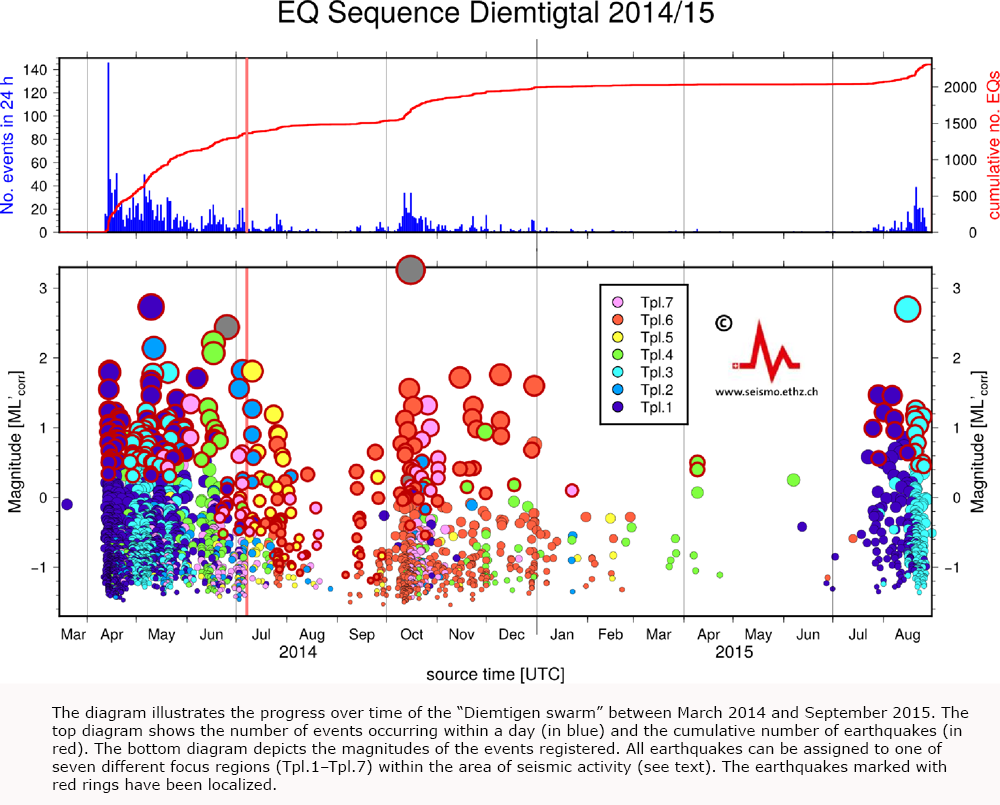2015-09-04
Recurrence of Earthquake Swarm near Diemtigen (BE)
Earthquake swarms are a typical feature of earthquake activity in Switzerland, and the Swiss Seismological Service (SED) registers several of them every year. These sequences of earthquakes are characterized by the fact that they cannot clearly be classified into a series of foreshocks, a main shock, and aftershocks. The earthquakes in a swarm, the numbers of which can vary from just a few to several thousand events, occur over a short period of time and in a small geographical area, and can last from a few hours to several years. As earthquake swarms outside Switzerland often occur in volcanically active regions with magmatic and hydrothermal activity, the theory is that they are related to the movement of fluids (gases and liquids) in the earth’s crust.
Read more...One of the most active earthquake swarms the SED has recorded since it was first founded is currently occurring near Diemtigen in the Bernese Oberland. More than 144 events with a magnitude of 0.5 or greater were recorded between April and December 2014. The three strongest earthquakes in this period occurred on May 10 (magnitude 2.7), on June 25 (magnitude 2.7), and on October 15 (magnitude 3.2). Since January 2015, swarm activity has decreased substantially and disappeared almost entirely in the summer months, before becoming more intense again in mid-July. Since then, the SED has registered 21 earthquakes with a magnitude of 0.5 or greater; the strongest with a magnitude of 2.7 occurred on August 15.
In order to investigate the “Diemtigen swarm” in more detail, the SED set up three mobile seismological stations in the region between June 2014 and April 2015. An initial analysis shows that the earthquakes have occurred in a steeply inclined zone extending to 400 by 700 meters at a depth of approximately 9 kilometers. Further, a complex shift pattern of seismic activity along this zone was observed. Thanks to a highly sensitive procedure, earthquakes with a magnitude of as little as –1.5 were detected. Thus, over 2,300 microearthquakes could be registered between January 2014 and September 2015, providing a very detailed picture of the swarm activity (see Figure 1).
Another increase of earthquake activity after a period of rest is nothing unusual, but does not allow any conclusions regarding how the swarm will progress. Swarm activities usually end after a few weeks or months; in rare cases, the strength and number of the earthquakes increase over time.
